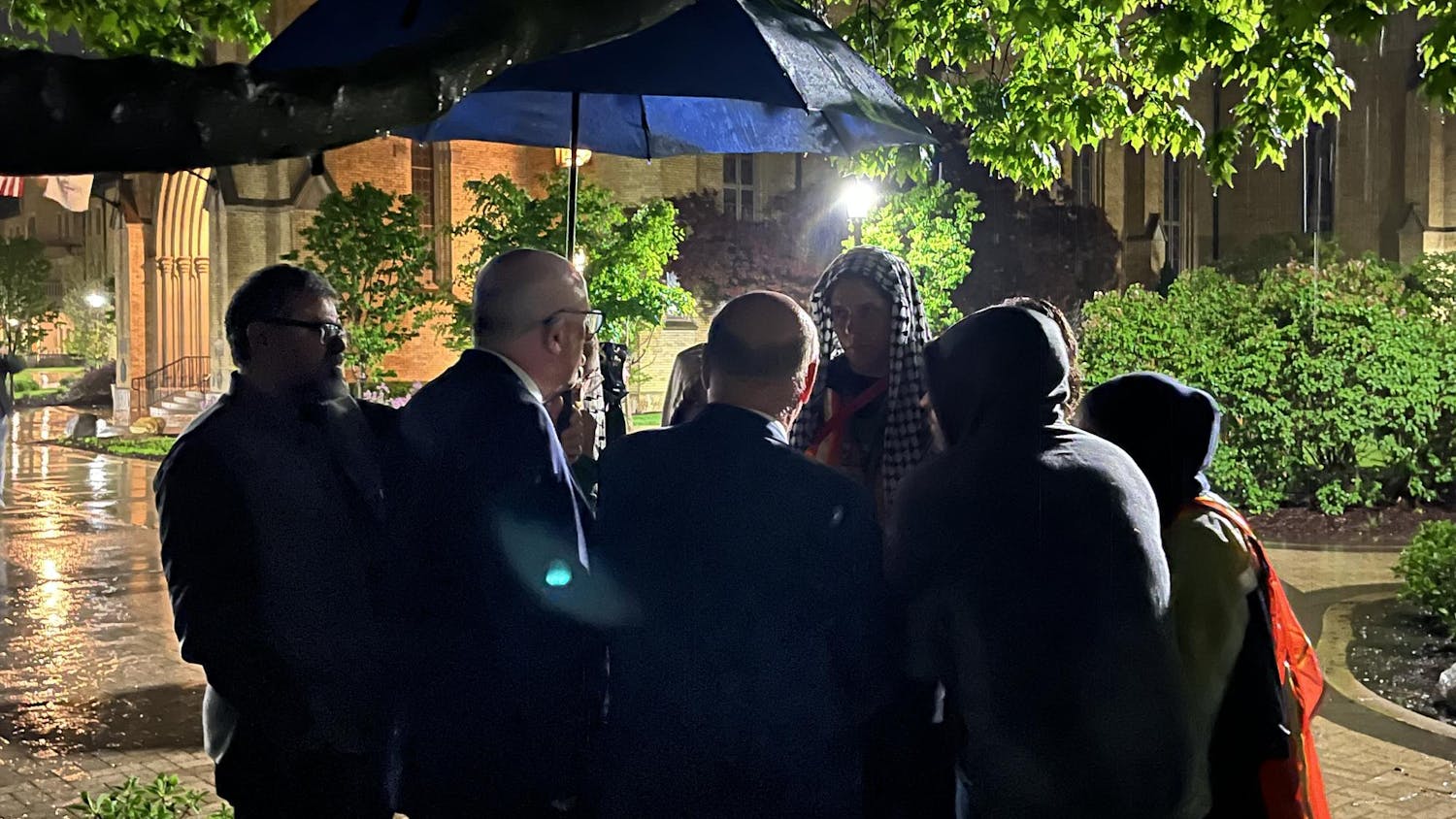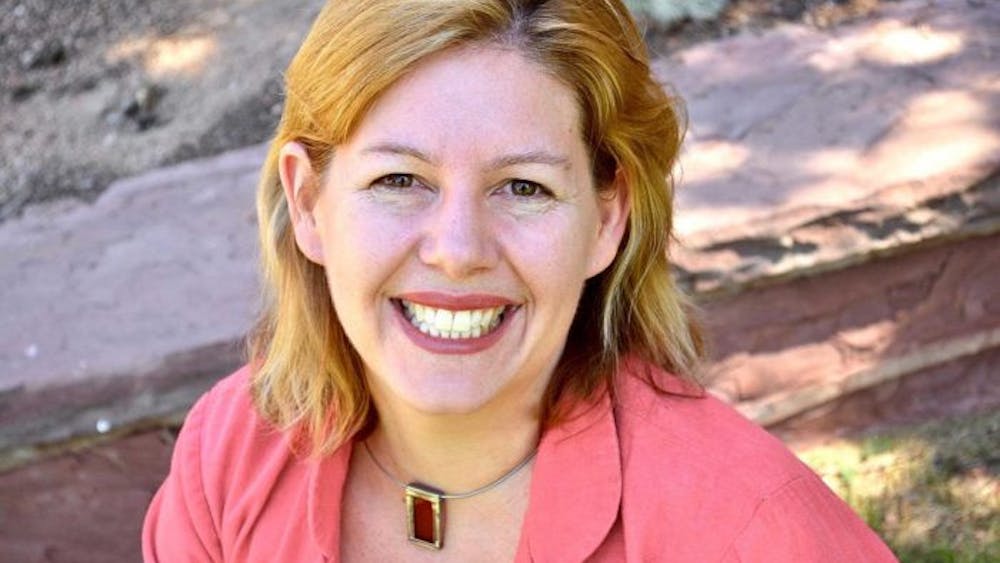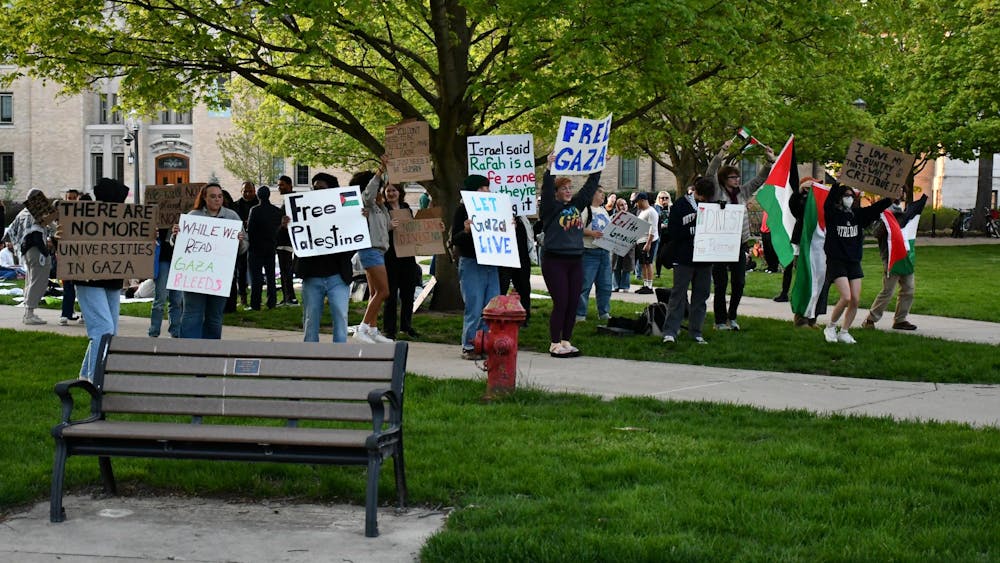Subtle, wasn’t it? In what has become an annual tradition, our administration came forward wringing its hands last week and murmuring gentle phrases such as “gratitude and connection," “passionate alumni network” and “significant sacrifice” to soften the blow of yet another tuition hike bringing next year’s total cost of attendance to $61,775.
After spending a few happy moments thinking of other ways one might spend $61,775 — CouchSurfing Scandinavia, for instance, or bicycling in the Himalayas — I wondered whether such unassuming yet persistent climbs in tuition costs really passed the smell test.
In 1991, the average U.S. worker earned $21,811 and spent just over $17,000 to send sons and daughters to Notre Dame. The year 2001 witnessed salaries and total costs rise to $33,000 and $29,100, respectively — a 5.2 percent tuition upswing that was heralded then (as this year’s is now) as “the lowest percent increase” in decades. As of 2013, the average salary was $45,000, yet the University’s price now far outstrips what an average American worker earns.
An increase is still an increase, and celebrating how low it remains fails to mask basic disparities. While household income grew by a factor of 6.5 over the past four decades, private university fees and expenses rose by a factor of 13. Soft explanations and the “value of a Notre Dame degree” also fail to account for how the University’s price could have doubled over the course of 13 years and grown at a rate well beyond annual inflation. As I continue to remark when passing the inexplicable dumpster-turned-modern art-piece entrenched in front of Riley, “Something is wrong with this picture.”
We continue to accept the yoke of annual tuition spikes but never stop to question the logic behind them. If costs continue to rise at a rate of three percent per year, the price of a Notre Dame education 25 years from now will be over half a million dollars.
But the arms race among private universities competing for prestige, applicants and ever-fattening endowments is nothing new. Similar surges in price apply to all of Notre Dame’s peer institutions. Hiring more administrators, maintaining compliance, funding research and spending $400 million on a stadium expansion are expensive endeavors, after all. Harvard’s cost has doubled since 2000, so what’s the problem?
Since Princeton implemented its “no loan” policy in 2001, other universities across the country have followed suit. One notable exception is Notre Dame. Although schools such as Harvard, Princeton, Amherst, Penn and Vanderbilt compete with Notre Dame in price, they all have “no loan” policies replacing student loan offers with additional gift aid and give 100 percent of students the opportunity to graduate debt-free. At Stanford and Yale, families earning under $100,000 pay no tuition; families making under $60,000 pay nothing at all.
By contrast, the average student loan debt for Notre Dame’s class of 2013 was $27,000. When you keep in mind that only 45 percent of first-year students receive gift aid and many students can't afford the cost outright, the figure for indebted students becomes much higher.
“But Harvard, Stanford, Princeton and Yale all have endowments larger than ours!” you say. “How can we hope to be so generous?”
Consider this. By 2014, Vanderbilt’s endowment reached $4 billion, and it has offered a “no loan” policy since 2009. Notre Dame’s endowment now stands at $10 billion and rivals that of Ivies such as Penn and Columbia, yet we continue to fall behind the schools with which we hope to compete and cannot match the financial aid scheme of a university with an endowment less than half of our own. When paired with the wheels of industry digging around Campus Crossings to the tune of $400 million, it seems a difficult and unnecessary pill to swallow.
Not only would a “no loan” policy alleviate the burden of debt on recent graduates, it would attract more applicants, place Notre Dame in the company of our nation’s elite institutions and affirm the University’s commitment to accessibility irrespective of economic background. As only 45 percent of first-year students needed gift aid last year, it represents a modest investment with power to transform the post-graduate options of lower-income students.
The University owes students and families a public and thorough explanation for how tuition is used and why it keeps increasing, and the administration should explain its continued resistance to a “no loan” financial aid policy. Until then, I will find it difficult to depict Notre Dame as a better investment than the institutions it claims to rival.













